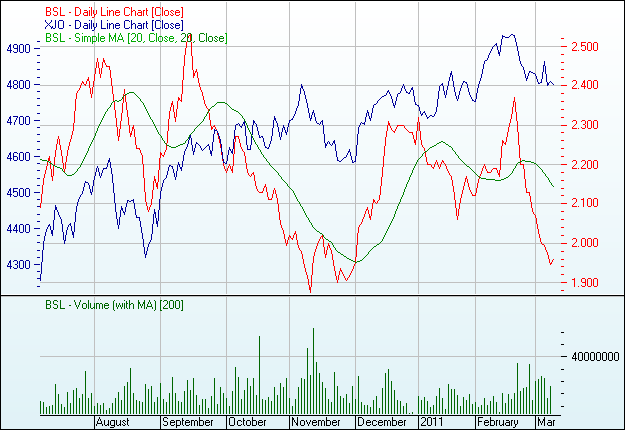
Amidst the heat and confusion about the carbon price, it does seem increasingly likely that some sort of tax will be applied. What does it mean for stocks? “Don’t know yet,” is the commonest answer, and not unreasonably so. But it is likely to hit the big emitters. The steel companies, BlueScope Steel and OneSteel are exciting the most concern. Morgan Stanley argues that compensation is likely to be offered that will be similar to previous carbon emissions proposals. But if it is not, Morgan estimates that Bluescope drops 48% and OneSteel 27% in value (on a discounted cash flow basis). Given our ailing manufacturing sector it seems unlikely the government will permit an area of some strength to whither.
Morgan Stanley asks if Australia’s steel sector is starting to go the same way as Britain’s. The growing emphasis on low emissions and avoiding energy intensive industry has led to the UK closing much of its steel manufacturing base. But the UK does not have a thriving iron ore industry, which is one reason why the currency is soaring. Can Australia afford to allow the exploitation of an obvious factor advantage to go by the wayside? Seems politically unsalable.
The biggest emitters are by far the electricity generators, which should have the ability to pass on higher costs. But to the extent that it does affect their margins it will not be a positive. And it will dampen consumption, especially if it also goes with a higher oil price.
A Deutsche report shows that amongst the top direct emitters are BlueScope, Woodside, Rio Tinto, Alcoa and Wesfarmers. Rio and Alcoa are also prominent in the list of the top indirect emitters. BHP Billiton is surprisingly low on the list.
Most of the miners are unlikely to struggle to cope with an extra impost. BHP and Rio are awash with cash. There is some concern about base metals prices, which have dipped, but Goldman Sachs is probably close to the conventional wisdom in forecasting no change in behaviour in the bulk of investment money in commodities, apart from some “short term profit taking.” Goldman is rejecting an “oil shock” as the base case.
Conclusion? The prospect of a higher oil price over the long term and the probability that carbon use will no longer cheap add up to the same thing. Portfolios should be positioned for some long term, irresistible trends in the use of fossil fuels.There will be higher costs associated with their use and that will have an inexorable effect.